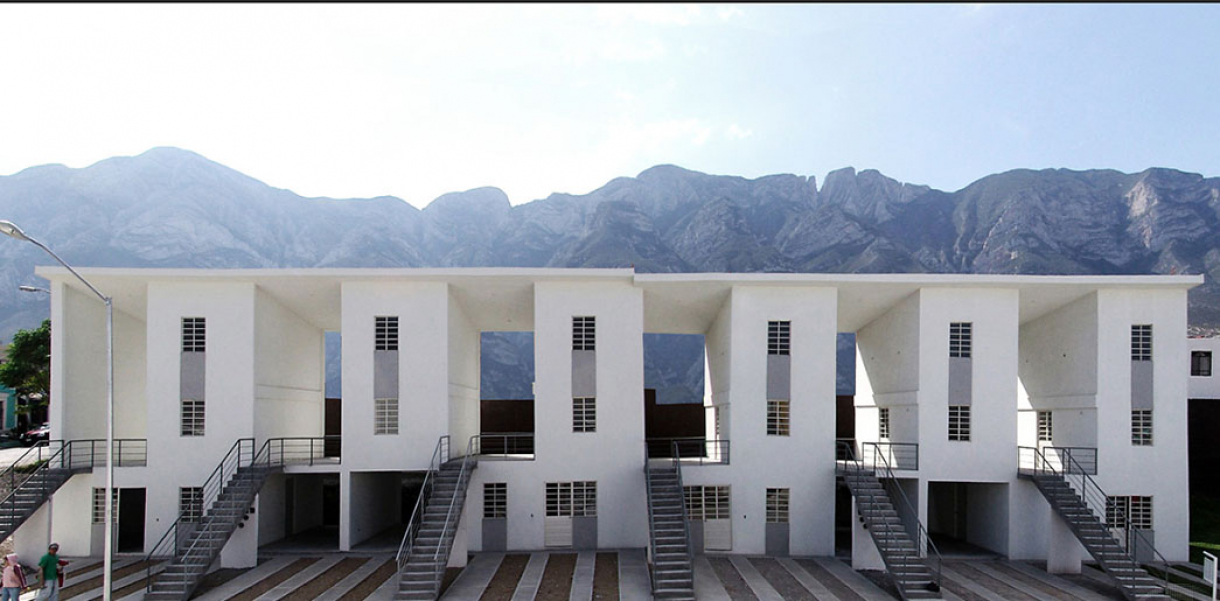What is the problem?
In the 21st century, for the first time in human history, a majority of the world’s population is urbanized, living in cities, towns and other urban places. During the coming decades, the most rapid global population growth will be in the urban areas of the developed and developing world. This creates great challenges for city planners in carrying out sustainable urban development projects, and the biggest problem is to create access to the opportunities which cities tend to concentrate in small areas - jobs, markets, education, health, recreation and social assistance. Because those opportunities are not in the outskirts of cities where land is cheap and where many people tend to be expelled to. Elemental's Alejandro Aravena elaborates: “Scarcity of means generates two problems: Reduction of size and displacement. Units are reduced to unacceptable standards and land being a limited resource, social housing tends to be located in the outskirts, segregated from opportunities, where land is cheap.”
Will megacities be concentrated slum or just concentrated?
Most countries have urbanized significantly since the 1950's and are projected to continue this process through the middle of the 21st century – the percentage of the world’s population living in urban areas has, in fact, just passed the 50 percent mark. Furthermore, approximately one-sixth of the world’s population now lives in shanty towns and if no serious action is taken to address the growing slum challenge, it is estimated that the slum population will increase from 32 percent of the world’s total urban population in 2010 to about 41 percent in 2030. Finally, almost all of the world’s total population increase during the period 2010-2030 will take place in urban areas, with rural areas’ growth being just about static. Nevertheless, megacities offer great opportunities: According to the OECD, Mexico City and São Paulo produce around 50 percent of the national GDP of Mexico, while Bangkok contributes with more than 40 percent to the GDP of Thailand, although it is home to only 10% of the country’s population. “Shanty towns are normally seen as the incapacity of people to provide themselves with decent living conditions; but slums are in fact, also an enormous economical and productive force able to mobilize huge amounts of resources for self construction. Instead of fighting the informal settling of people, we should be channeling it strategically. Actually, no, there is no clear and feasible answer to the urbanization challenge unless we consider the capacity of the people to build their own environment. The real scarce resource then, will not be money, but coordination”, Alejandro Aravena explains.
Half a house makes a whole community
“Public money allows to build 36m2. The market designs that as if it was a small house. We thought of reframing the problem: what if 36m2 are thought as half of a good house instead of a small one? Once the problem is reframed, the key question is which half do we do?”, Alejandro Aravena asks. ELEMENTAL Monterrey uses the strategy of investing state resources to build “the difficult half” of the home, the one that requires coordination. Given that almost 50 percent of the square meters of the complex will be self-built, it allows for growth to occur within the structure and within people’s (economic) capabilities. By using the old 1970’s incremental housing, an open system was introduced that allows a family’s own capacity of action and selfconstruction to be added to the solution. This openness dissolves the old critique to social housing, namely the monotonous repetition of solutions which is unable to accommodate the diversity of needs, preferences and expectations of people. “The design of ELEMENTAL Monterrey takes a different approach to a complex problem, and it is clear that the design team considered the whole system. Normally you’d use 30 percent of the development budget to buy the land, and 70 percent to build the house. In this case, they used 80 percent to buy the land, in the city, closer to where people work, which allows for less commuting, and only 20 percent to build the house. This ensures that residents can save substantial sums of their limited disposable which all together creates a new and very interesting value transfer”, the INDEX: Jury explains.
Location, location, location
In order to deal with scarce resources, Elemental introduced Incremental Design; the government delivers what families can’t do privately and people expand afterwards, allowing housing to work as a social investment and not as a mere public expense. The design is low rise but dense enough so that it allows paying for expensive, well located land, without overcrowding and with capacity for expansions. Alejandro Aravena goes on: “By framing the void for that expansion to happen, we are not only making the process structurally safe and economic for the families, but also taking care of the future quality of the neighborhood after self-construction. This is important because we are looking for value gain of the properties. All of us, when buying a house expect it to grow its value over time. We identified a set of design conditions that allow a unit to increase its value over time, and if that happens, housing can be understood as an investment and not as a mere social expense.” The INDEX: Jury says about the INDEX: Award winner: “Providing the basic utilities and infrastructure allows the user to customize non-technical aspects of the home, which provides a sense of ownership and the possibility of expansion and flexibility - allowing your home to grow with your needs and resources. Finally, the fact that the design is replicable to other major cities, while at the same time being an example of great architecture with an interesting form, is something very unique.”
Designed by
Alejandro Aravena, Fernando García-Huidobro, Gonzalo Arteaga
Website
www.elementalchile.cl/viviendas/monterrey-las-anacuas






